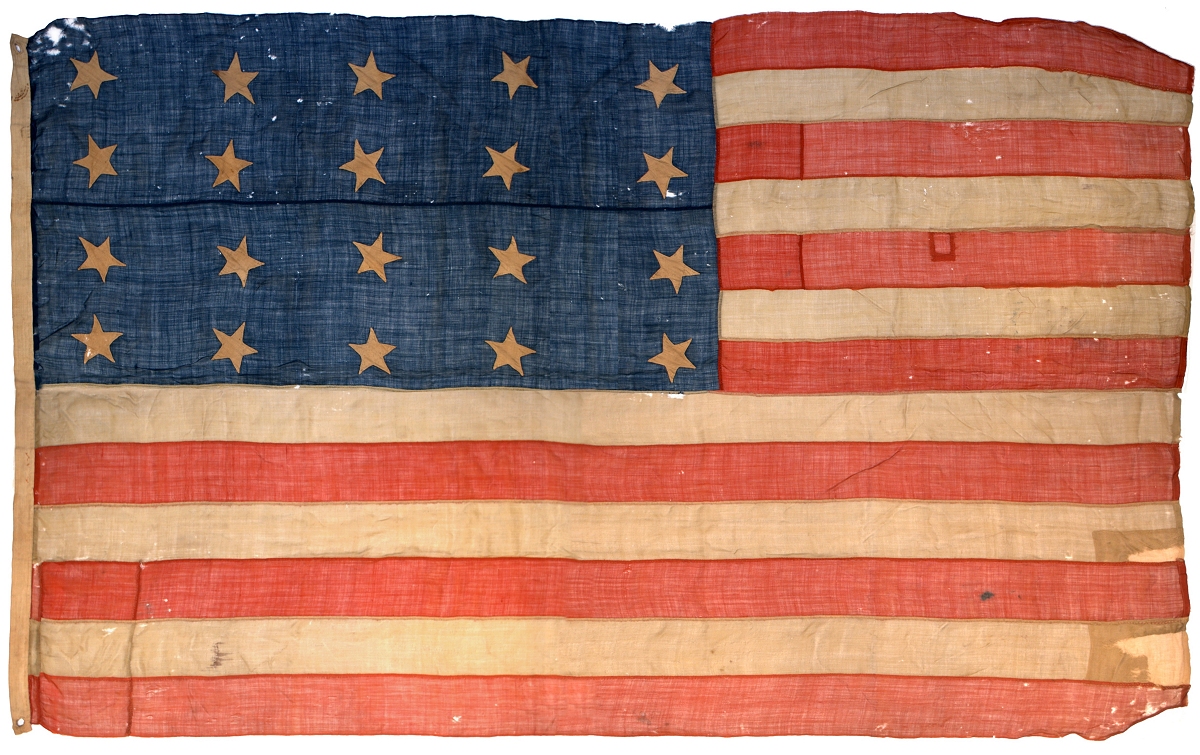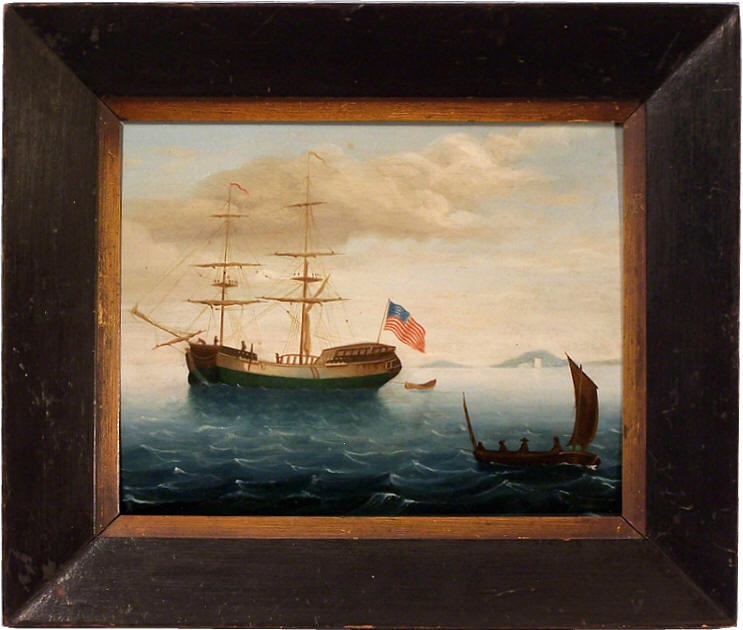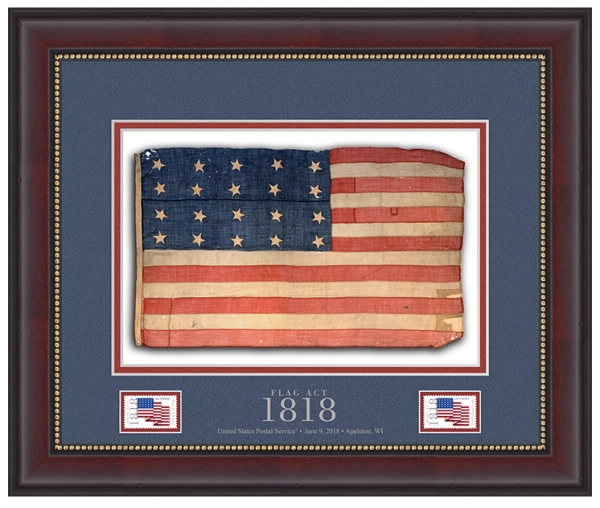|

This flag is one of the
earliest American flags in the Rare Flags collection,
dating to the period of the Third Flag Act of 1818. Also
known as the Act to Establish the Flag, the Third Flag
Act superseded the Second Flag Act of
1794 which specified fifteen stars and fifteen stripes.
The new Act's guidance on maintaining thirteen stripes while
increasing the number of stars for each state would guide the
evolution of our flag for the next hundred years to its modern form. The act
reads: "An Act
to establish the flag of the United States. Be it
enacted by the Senate and House of Representatives of
the United States of America, in Congress Assembled,
That from and after the fourth day of July next, the
flag of the United States be thirteen horizontal
stripes, alternate red and white: that the union be
twenty stars, white in a blue field. And be it further
enacted, That on the admission of every new state into
the Union, one star be added to the union of the flag;
and that such addition shall take effect of the fourth
day of July then next succeeding such admission."
|
Flags of twenty
stars are extremely rare. I am aware of
only two other period twenty star flags, one of
which is in a large oval pattern, and the other
of which is in a similar row pattern formerly
held in the renowned collection of Boleslaw and
Marie Louise Mastai and pictured their famous
1973 book The Stars and Stripes on pages
54-55. According to the Mastais at the
time it was believed to be the only twenty-star
flag in existence. These two, and this flag, are
the only three I know of that date to the period
of 1818-1819, though there a few later period
Civil War era twenty star flags that have
surfaced. According to the Mastais, the
first twenty star flags flown on April 13, 1818,
were "grand luminary" flags, also known as "great
star" flags. However, two consecutive
presidential directives specified a different
pattern for the Navy to use. First, on May
18, 1818, that the stars be "staggered" rows;
and second on September 18, 1818, that the stars
be in "parallel aligned" rows. Given this
flag's construction, its size, its obvious wear
and repairs on the fly end, and its compliance
with the second presidential directive for
official Navy flags, it is likely that this flag
was made for U.S. Navy use, especially since the
primary use of the American Flag during this
period of time was to identify American ships at
sea. Its construction, with its canvas
sleeve hoist, whip stitch grommets, homespun
wool bunting, hand stitching and single-appliqué
stars, is correct in every |
 |
|
American Oil
Painting, 1828, depicting the
H.M.S. Jersey in 1777, a British Prison Ship during the
American Revolution. An
uncle of artist G. Hinkley of
Albany, NY, was a prisoner
aboard the ship. Most likely the
ship would have flown a British
Flag, but Hinkley's memorial
painting shows an American Flag
to honor those patriots who
suffered there.
|
|
|
|
way for a flag of
the 1818 period. The flag shows evidence
of extensive early repairs, including
two partially replaced red stripes near the
canton and a replaced bottom red stripe. Based on the proportion of the canton, the flag
has been considerably shortened from its
original length, probably by several feet.
The worn fly end the flag, which suffered losses
during use, has been being turned back and sewn.
You can imagine this beautiful flag, most likely
several feet longer, flying majestically from
the mast of an American ship. All told,
this flag, of the same period as the Star
Spangled Banner, remains among a handful of the
very earliest American flags that survive into
the 21st century.
On June 9, 2018, the U.S. Postal Service issued a
commemorative framed flag art print
to coincide with the issue of the Flag Act of
1818 Forever Stamp. The framed flag art
features an image of this flag along with a
mounted Flag Act of 1818 stamp and First Day of
Issue details.
 |
|

